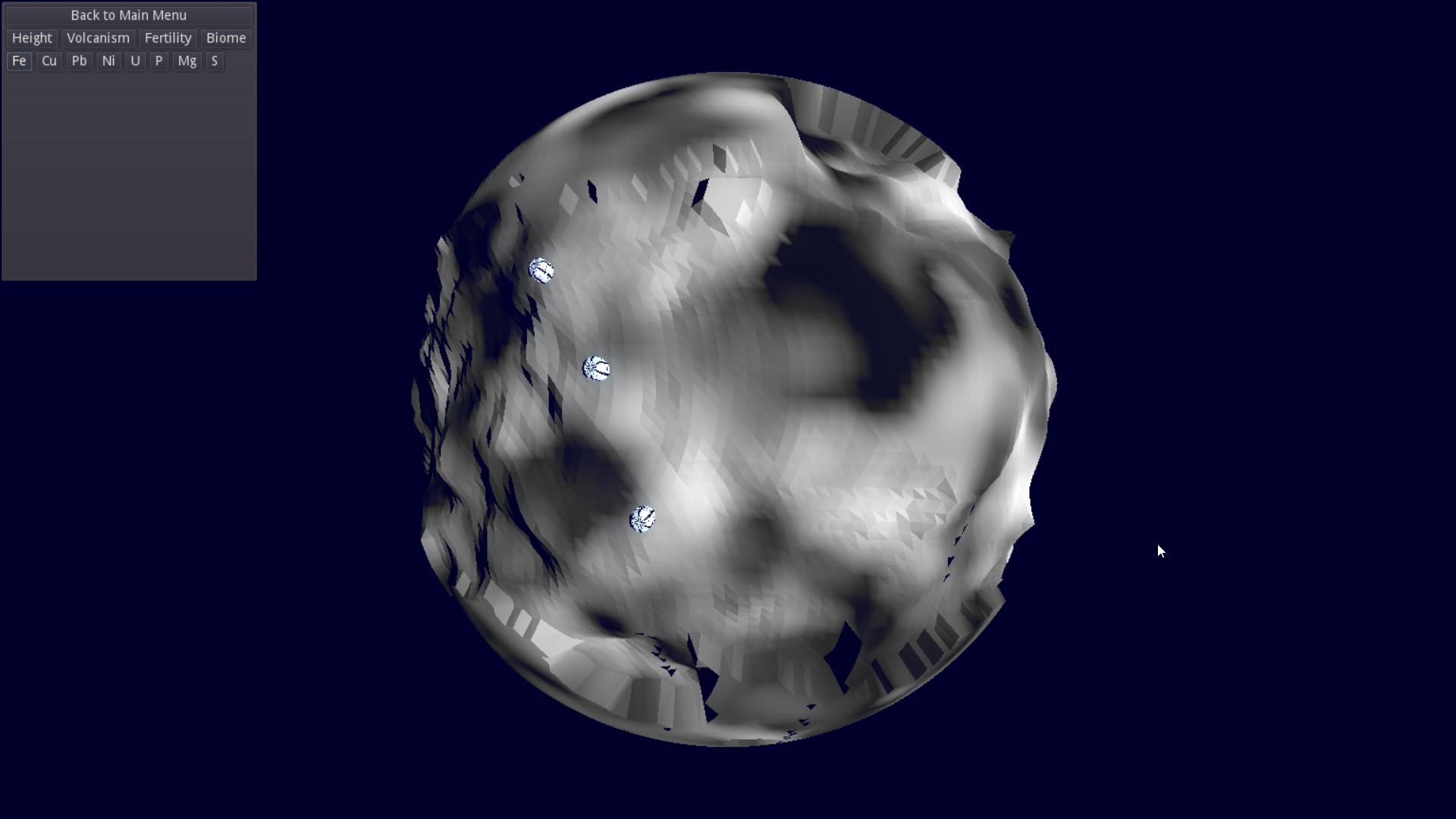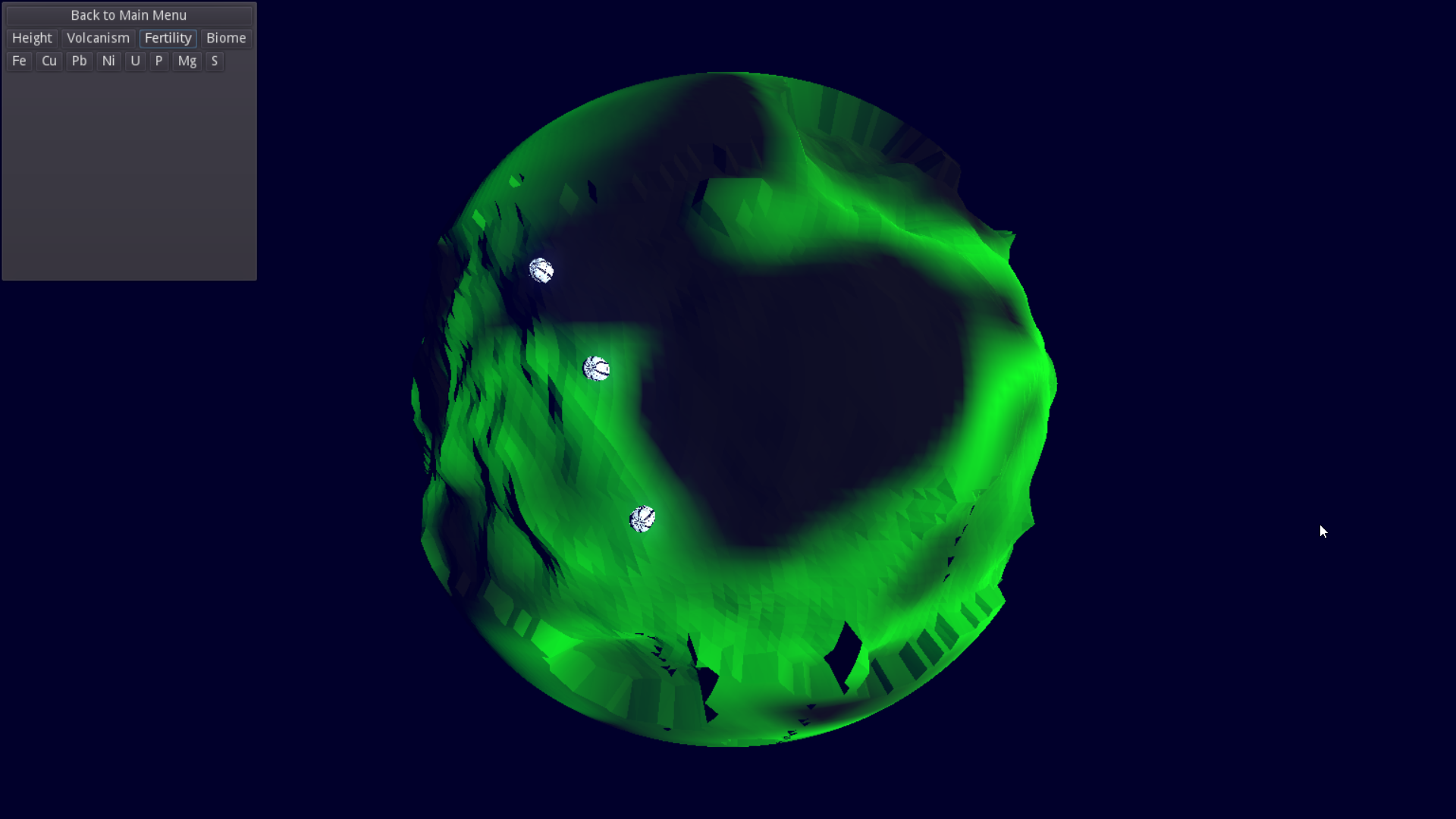Weekly Progress #10
What's New?
In terms of released features, nothing. In terms of unreleased features, Lots.
World Generation
The moon has shrunk, from a radius of 800,000 m down to 200,000 m. This was done for a couple of reasons. Firstly, once I started getting lighting and the camera working properly I was starting to see floating point jittering at the previous size. Secondly, the previous size was just too damn big. I foresaw that the majority of gameplay would just be staring at a map waiting for the sub to travel for long distances at high time compression. This just seemed like it would totally remove the player from the world, ruining the immersion to be gained from the setting. With the smaller world travel at 4x time compression seems viable, with only a couple of minutes needed to travel between settlements at 4x time compression, and travelling to the other side of the world feeling like an achievable expedition, instead of an entire day of travel.

I've started placing stations on the world map. Here you can see the first three Hudson stations placed along the Hudson Ridge. Hudson's initial colonization position meant it was forced to build scattered outposts early, which put it on the path to dominate long distance trade in the following centuries.
To inform station placement I first needed to generate resource placement. This is primarily through ore placement. Currently I'm working with a set of 8 ores: Hematite, Garnierite, Galena, Bornite, Langbeinite, Lazulite, Uranite, and Pyrite. These ores each yield a combination of base minerals: Iron, Copper, Nickel, Uranium, Phosphorus, Magnesium, and Sulfur.

This is a map showing the abundance of Iron, one of the most common minerals.

Here is a map for Uranium, much rarer but critically important to energy production in Xenosea. As you can see Hudson's starting location is pretty sparse, hence their need for wide colonization.

The final factor is fertility. This one is a little more complicated. The base of the ecosystem in Xenosea are chemosynthetic autotrophs, these are concentrated around seafloor vents, and then moved across the moon by ocean currents. These currents are setup to mimic Hadley cells, with the prevailing currents varying by latitude.
Gameplay Mode
In addition to world generation I've been working on putting the player into that world. This involved a lot of changes to game logic handing a variable up. In the test maps, up is simply <0,1,0>. On the generated map though up is defined by a vector pointing to the submarine from the center of the moon. This has taken a lot of time, but is finally complete. You can now travel across the entire moon given enough time, and as long as there is room between the seafloor and ice roof. My calculations give an expected time of 2.9 hours at full time compression to circle the moon, but I can't say I've tried it myself yet.
What's Next?
The immediate next step is to start placing the stations into the detailed rendering of the world. This will take some time building editor tools, but I hope to have at least one station in place by next week. Once that's done I think I'll push this version out for those who are curious. Past that, I'll start working on adding AI subs and setting up the economic simulation.
Get Xenosea
Xenosea
Open world submarine sim.
| Status | Prototype |
| Author | Commodore Shawn |
| Genre | Simulation |
| Tags | 3D, Atmospheric, submarine |
More posts
- Weekly Progress #43Oct 07, 2022
- Weekly Progress #41, #42Sep 30, 2022
- Weekly Progress #40Sep 17, 2022
- Novarus UpdateSep 09, 2022
- Weekly Progress #38Sep 02, 2022
- Weekly Progress #37Aug 26, 2022
- Weekly Progress #36Aug 19, 2022
- Weekly Progress #35Aug 12, 2022
- Modular SubmarinesAug 05, 2022
- Weekly Progress #33 - A House of PlagueJul 29, 2022


Leave a comment
Log in with itch.io to leave a comment.